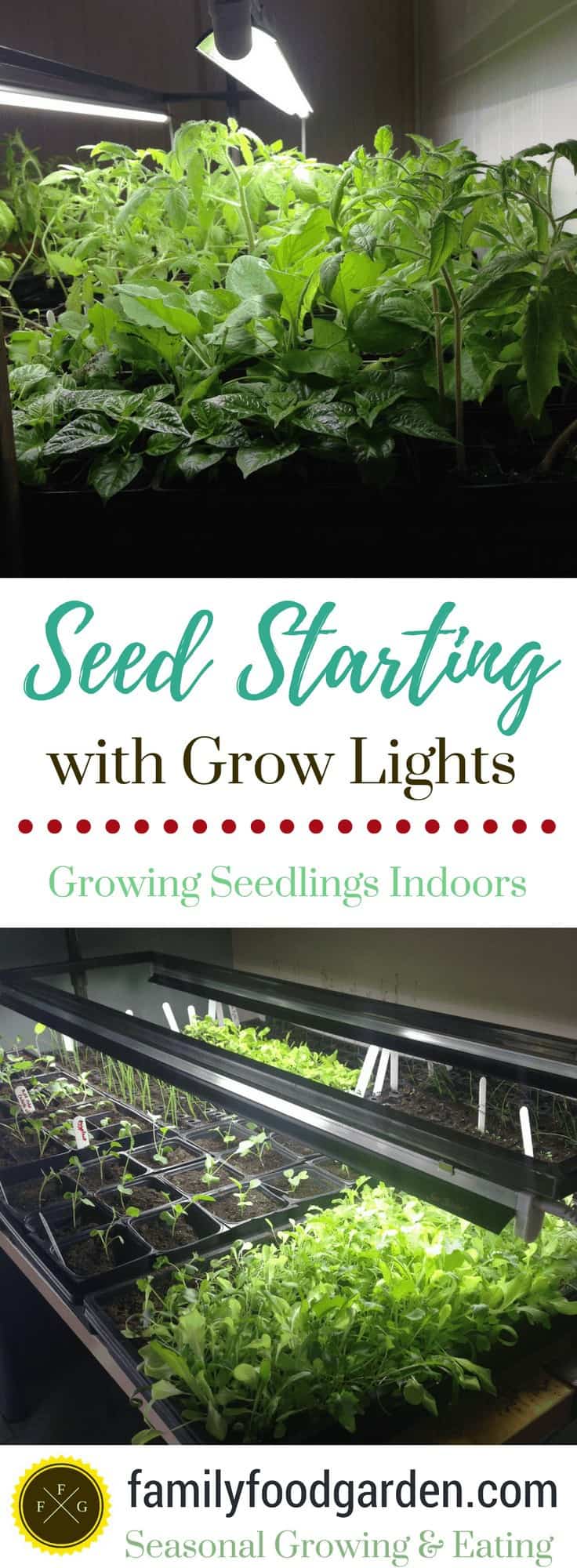
Did you know that most plants need sunlight to grow? Unfortunately, there are many places in the world where it is impossible to get enough natural light for your plants.
If you’re looking to build one of these greenhouses, this guide will help you make a plan and find all of the materials needed.
When I shared posts such as growing indoor microgreens or seed starting, I got asked a lot about our indoor greenhouse and grow light set up.
Today I wanted to show you the grow lights & mini indoor greenhouse we’re using.
Let’s get started.
Why do people need an indoor greenhouse?
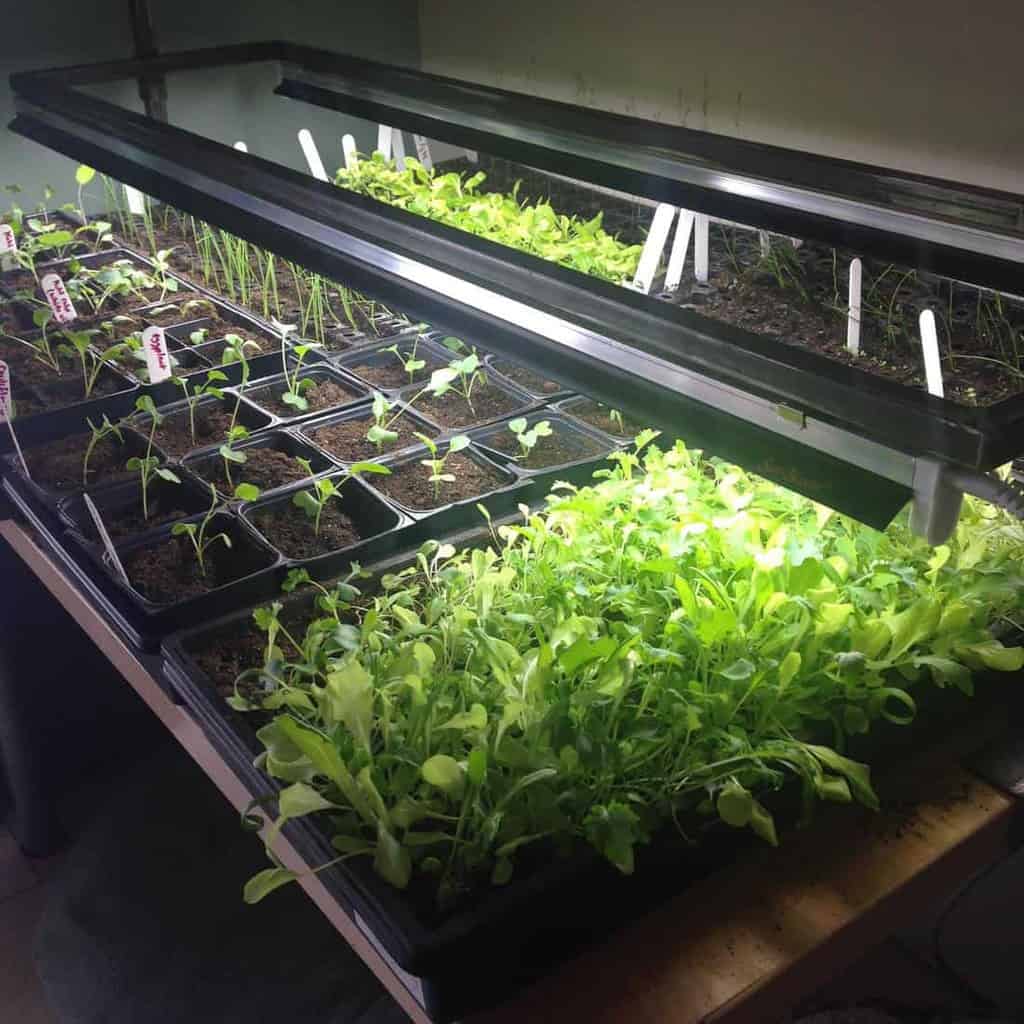
The best part about having your own indoor greenhouse is the fact that you will be able to grow year-round with almost no interruptions.
The greenhouse will provide shelter for your plants in any harsh weather conditions, be it the scorching summer heat or the chilly winter months.
You can also protect them from harmful insects and pests that may inhibit growth.
Here are some benefits of having an indoor herb garden.
Usability
One of the biggest advantages of mini greenhouses is that you can grow plants year-round without worrying about harsh weather conditions and outside elements such as insects and pests.
You also don’t need to worry about weeds taking over the plants, because the greenhouse will keep them safe and secure.
Space
Another advantage of indoor greenhouses is that indoor greenhouses are more suited for people who live in small homes or flats where outdoor gardening would be difficult to carry out.
Also, these greenhouses can easily be set up on balconies, patios, and decks.
Easier growth
As the greenhouse is a controlled environment, it will be easier to grow plants indoors without having to worry about pests or insects harming them.
You can also set up the temperature of your greenhouse according to what type of plants you intend to grow and how they thrive in different conditions.
Health benefits
Indoor greenhouses provide you with a fun new hobby that is good for your health. It’s been proven that spending time indoors gardening reduces stress levels and also provides a sense of peace and serenity to the one who cultivates them.
Helps to protect the environment
Growing plants indoors using the best indoor greenhouses can help reduce carbon dioxide emissions from vehicles, which in turn helps protect the environment.
Can also be used for commercial purposes
Some people like to grow plants as a business venture. Although indoor greenhouses can be expensive to maintain and install, many people find it worthwhile because of the profit they make once they start harvesting the plants.
Aesthetic value
Another advantage of having an indoor greenhouse is that it can add to the overall aesthetic value of your home. Plants like fresh herbs are not only good for your health but also bring a sense of freshness and elegance to any house or office space.
Saves water
Lastly, another good thing about the best indoor greenhouse is that it saves water. Since the plants are protected, they don’t need to be watered as often and can go days without being given any water at all.
The greenhouse temperature is controlled hence plants growing don’t get dehydrated.
No matter what your reasons for wanting to have an indoor greenhouse are, you can find one that fits all of your criteria.
There are many places online that you can get an indoor greenhouse, so if you are interested in starting your own gardening hobby then go ahead and buy one today.
Crops for Small Indoor Greenhouses
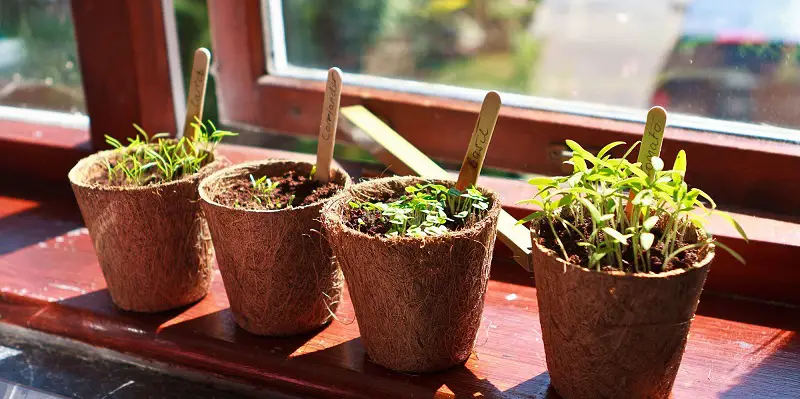
When growing plants in a mini greenhouse, it is important to consider the different types of crops that can be grown inside.
Here are examples of different types of crops that can be successfully grown indoors.
Lettuce (romaine)
Romaine lettuce is one of the most popular types of lettuce and can be used in almost any dish. As far as plants go, it’s one of the easier ones to start growing in your indoor greenhouse because it requires very little care and attention.
Jalapeño peppers
Jalapeños are a spice, and if you were to grow them yourself in your mini greenhouse, you could save a significant amount of money compared to how much they cost at the grocery store.
They don’t require too much attention, but they do require a bit more light than romaine lettuce.
Beets
Beets are one of the easiest root vegetables to grow in the indoor greenhouse because even if you mess up with your hydroponics setup, it’s not that big of a deal.
The plant will still produce delicious beets for you which can then be used in all sorts of dishes.
Tomatoes
Tomatoes are one of the most popular types of fruit to grow indoors because you can use a led grow light produce as their alternative light supply.
They require more attention than romaine lettuce or beets but much less compared to jalapeños.
Hot peppers
Hot peppers are a popular spice, but it is difficult for beginner farmers to grow them because they require much more attention than lettuce or beets.
If you were to mess up with your hydroponics setup, the plant will very likely die.
Cucumbers
Cucumbers are a refreshing type of melon that can be used to make various dishes or just eaten raw on their own. You’ll need to pay more attention than lettuce, but not as much as peppers.
Acorn squash
Acorn squash is one of the best plants to grow indoors because it requires less light and attention compared to most plants that can be grown inside.
Zucchini
Zucchini is very similar to cucumbers, only the plant itself is larger and shaped differently. As such, it requires a bit more attention than cucumbers but not as much as peppers or squash.
The nice thing about most plants, such as Zucchini is that they grow from seeds. This means you can plant seeds and grow them from start to finish with no need for transplanting them from a greenhouse.
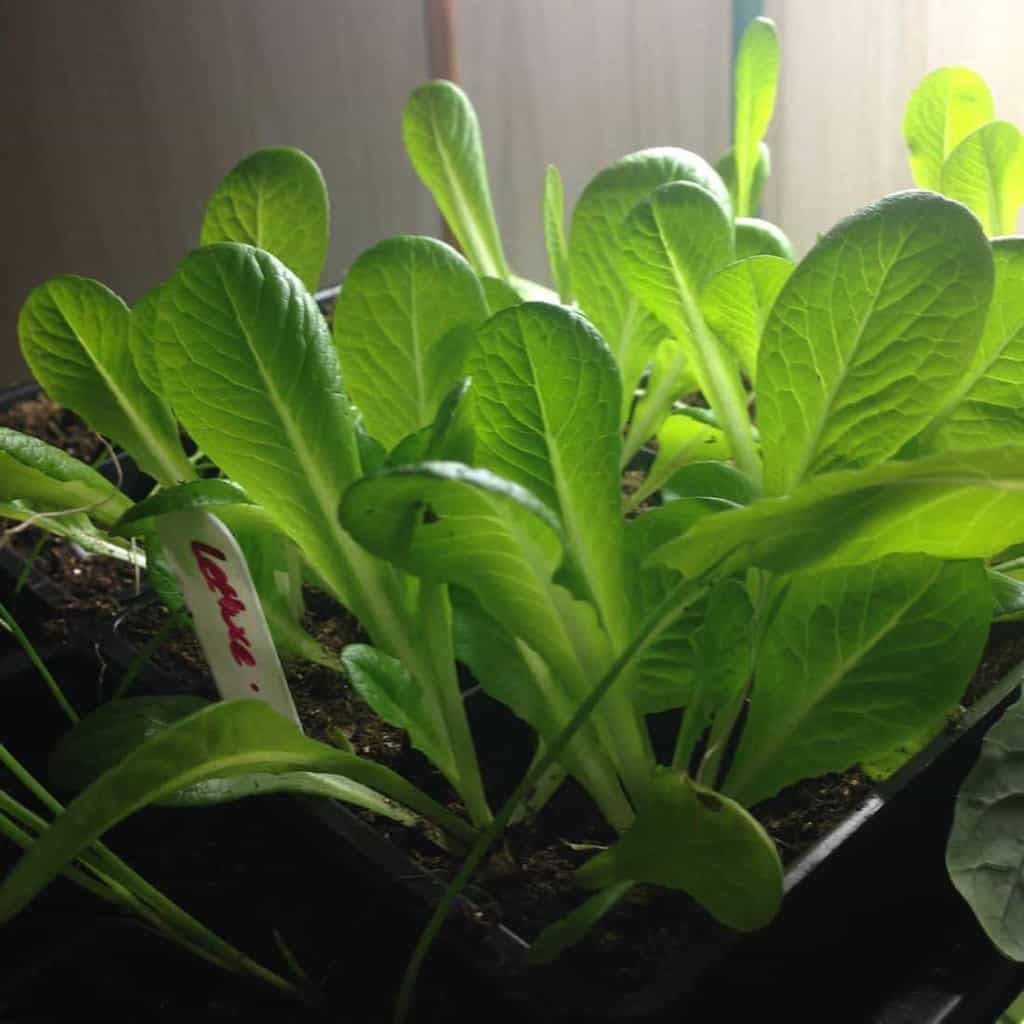
We grow indoor microgreens, baby greens, herbs, and of course, hundreds of seedlings every spring!
Grow Lights for Indoor Gardening
We’ve been using sun blaster grow lights now for 7 years. We have 5 bulbs and have only replaced one of them (& I think it was our fault that it stopped working!).
While I haven’t tried other grow lights, these ones have worked great for us. I’d love it if you could share your favs in the comments!
The grow lights I’d love to invest in are the large LED Grow Lights.
I love the led light because it covers a better surface area than the sandblaster ones we’re using.
Our Indoor Greenhouse with Lights DIY
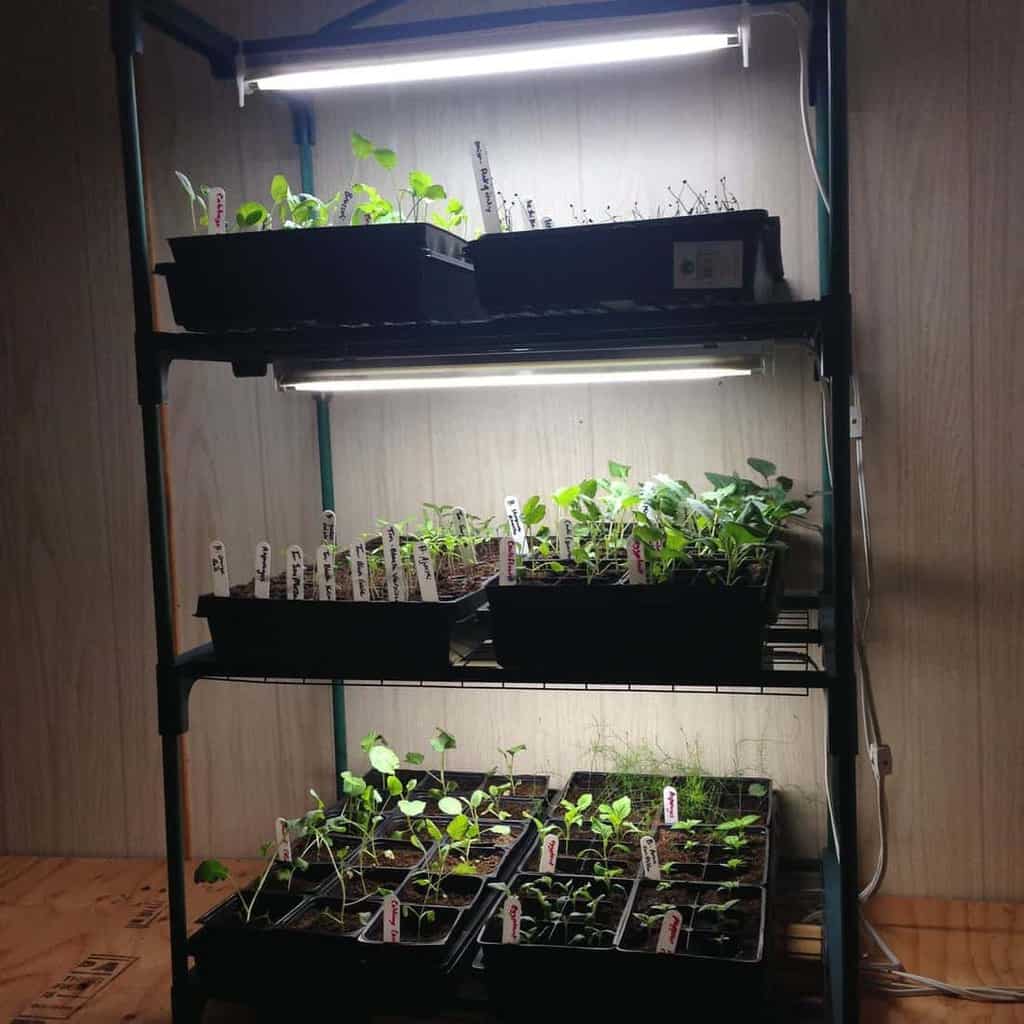
We’ve used this 3 tier mini greenhouse for 8 years now.
The plastic cover of our mini greenhouse has become too old and the zipper broke so it needs replacing.
We use a 2 foot sun blaster grow light with reflector on each shelf.
Although the plants get better light if one tray was under each light, we double them up and rotate the pots.
Because we start so many seeds indoor I’ve been tempted to add a second set up with a 4 tier indoor greenhouse with more lights.
Since we’ve purchased our grow lights they came out with LED ones. Our grow lights are the T5 High Output Fluorescent.
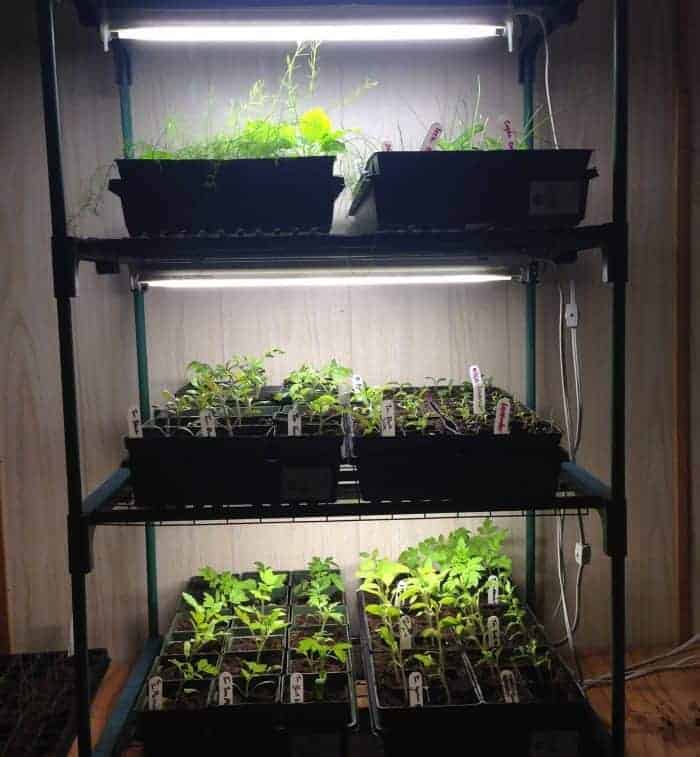
Sunblaster also carries these mini greenhouses that don’t take up too much space, perfect for growing herbs!
Where should I place my greenhouse?
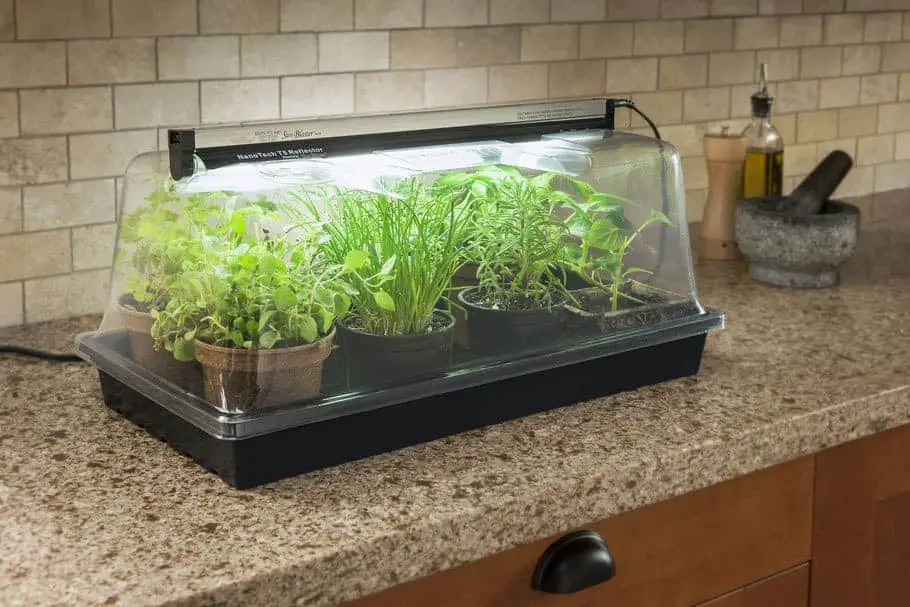
One major drawback of having an indoor greenhouse, however, is that if you want to get the most out of it, you need to understand how to position it.
The best orientation for an indoor greenhouse is one that maximizes access to light without any obstructions.
Depending on the geographic location of the greenhouse, this may be an east-west or a north-south orientation.
If you are concerned that one direction has more light than another because your house blocks out part of the sun’s path, use a hygrometer to check how much direct sunlight is getting into the greenhouse.
If you can adjust the greenhouse’s position to make more light get in, it is best to do so. This should make your indoor gardening life easier.
If your house blocks direct sunlight from coming into one side of the greenhouse, or if you simply cannot change the orientation of the greenhouse because of other geographical factors (like a fence or a hill), then you should use reflective materials to maximize the light’s efficiency.
One way to do this is with mirrors. Place a mirror on the side of the greenhouse that doesn’t get as much direct sunlight and point it so that it reflects more of the sun into the rest of the greenhouse.
If you don’t want to use mirrors in your mini greenhouse, paint one wall of your greenhouse white. This can be a great substitute for mirrors to increase the amount of light in your greenhouse.
Another alternative is to use a grow lamp instead of reflecting natural sunlight or using white-painted walls.
A grow lamp emits energy similar to the sun, but it has a more intense effect and can help keep plants warm if needed.
If you plan on growing food crops, then you can use grow lamps instead of sunlight to increase production without worrying about the harsh effects that the sun’s rays have on some plants.
The type of greenhouse structure is another factor that affects how much sunlight reaches it. If your greenhouse has vertical sidewalls, more light will be blocked than if it had slanted or curved sidewalls.
Also, a greenhouse that is made out of solid material (like plastic or glass) will block more light than one that uses grids instead.
All of these factors should be taken into consideration when you’re thinking about where to position your greenhouse for maximum exposure to sunlight.
The type of plant you want to grow also affects this decision because some plants need more sunlight than others.
If you are growing mostly food crops, arranging your greenhouse so that there is less light obstruction and
maximizing the amount of white painted walls or reflective surfaces will provide the best results for both quantity and quality of crop yield.
If you are growing plants like houseplants, cacti, orchids, etc., you can maximize the output of a grow lamp instead, as these plants don’t need much sunlight.
If you want to use natural light and minimize obstructions, then an east-west orientation is best because it allows the maximum amount of sunlight to enter and there are no shadows from any part of the house.
This may not be possible for some of you, however, so use the sun’s path and your house’s structure to guide your decision of where to place your greenhouse for optimal results.
If you want to do what is most efficient according to the path of the sun, but you can’t get enough sunlight in due to obstructions from your house or other geographical factors, then you can use a grow lamp to supplement natural sunlight.
For a little bit of money, you can purchase a light specifically made for growing plants indoors in greenhouses or in low-light areas.
These lights emit the same kind of energy that the sun emits – but they are not quite as intense.
In addition, they will help keep your greenhouse warm when it is cold outside and used during the wintertime.
These lights will help increase your plant production and ensure that they flower and grow as fast as possible.
The best way to position a greenhouse inside your house depends on your personal preference, what you want to grow, and where the sun enters the house.
If you cannot change the orientation available for your greenhouse, then using mirrors or a grow lamp will be your best bet for increasing the amount of sunlight accessible to your plants.
Indoor Greenhouse Tips
Here are some other tips to keep in mind once you set up your best indoor greenhouse.
Keep your favorite plants in there during the winter months or when you are on vacation. This way they will always be at hand should you want them for a special occasion.
You can use your greenhouse for more than just plants. Some people like to grow mushrooms inside their greenhouses. Use it as a space for anything you want and everything will be perfect.
Make sure that the plants have plenty of light during the day by either opening up doors/windows on opposite sides or placing them in a south-facing window if possible.
Water regularly throughout the summer months but reduce watering when fall is around the corner. Plants grow well when they don’t get too much water when cold weather sets in.
Stop fertilizing at this time also because extra nutrients may promote growth which is not wanted once winter starts.
Conclusion
Although grow lights and a mini greenhouse can be an investment, I think they’re well worth it in the long run!
More posts on indoor gardening from Family Food Garden:
- Growing herbs indoors with Herb Garden Kits
- Container herb gardening
- Indoor garden ideas to grow food inside (lots of neat modern ways!)
- Mini and small greenhouse kits in this greenhouse kit roundup post
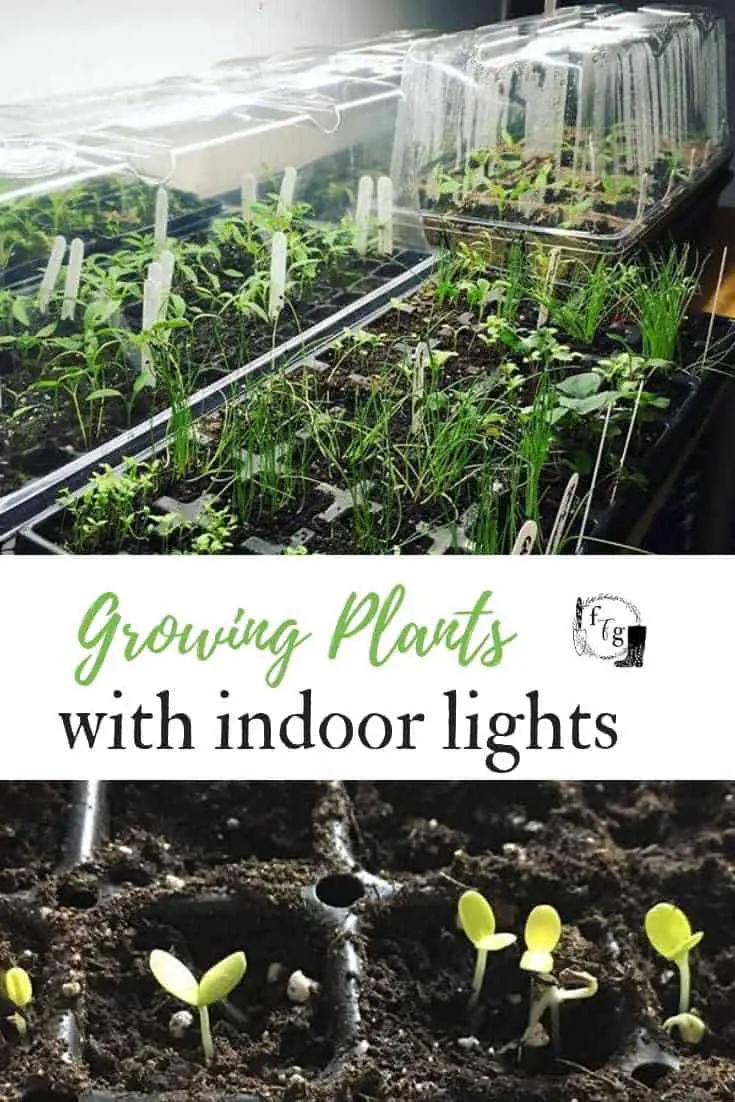

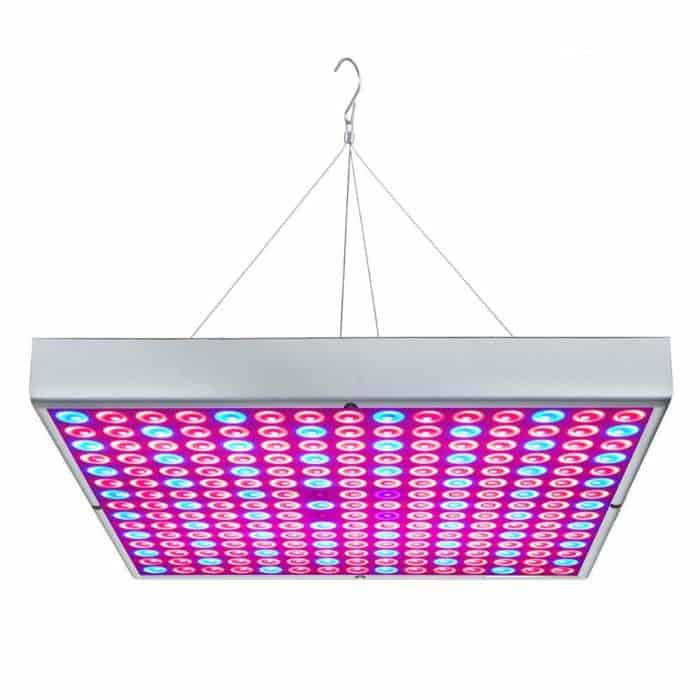
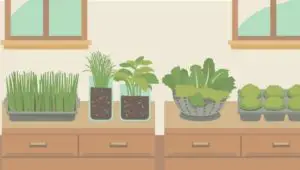
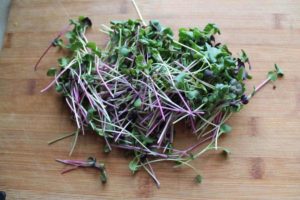
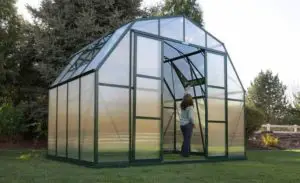
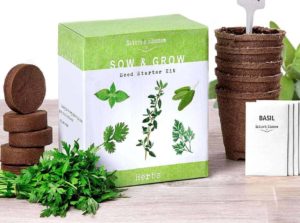
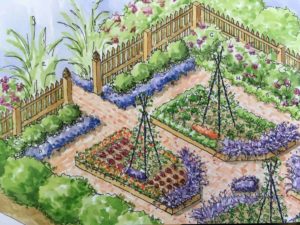
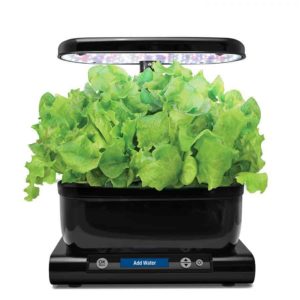
I have had great success growing seedlings, carrots, herbs, lettuces, even heat loving starts like tomatoes, cucumber, squash, melons, etc. with your basic Lowes shop lights! They are very affordable, easy to access no matter where you live, and effective! I have grown food on shelves I built in my garage and a pantry outfitted with shop lights! You really can grow food just about anywhere and very affordably!
Thanks for sharing those tips
Hi Isis 🙂
I’m in a zone 4-ish and I have a pretty short season. Mind you last summer frankly sucked! I read through Eliot Coleman’s, and Niki Jabbour’s books. I followed the cold frame ideas and set up my winter garden outside. Poor plants are either dead or frozen solid in our -25 weather. I need another setup because the grocery store lettuces are poor at best and they actually make me ill. I even tried growing lettuce in a pot by my sunny window and they all died. I love your idea! I spent some time doing research and see that it could be about a $500 investment for the lights, but over the years, that is well worth it. Thanks for the post! This is in my future!! 🙂
I’ve heard some gardeners having a little success with winter gardening in zone 4 but the plants are mulched, then a double tunnel. It gets to be -20C here so we’re right at that line. It also takes practice though,and depends on the winter. I tend to give myself January off of gardening them grow lettuce indoors once I start seed starting early Feb.
Wishing you all the best for your outdoor and indoor gardening 🙂
Hi
We are making micro farm.
Canu help us?